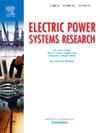Residual guided and cross-level feature interaction network for substation anomaly detection
IF 4.2
3区 工程技术
Q2 ENGINEERING, ELECTRICAL & ELECTRONIC
引用次数: 0
Abstract
Recently, YOLO-based object detection methods have achieved remarkable results in substation anomaly detection. However, existing detection methods lack target information with different scales of receptive fields during Backbone feature extraction, hindering the effective discrimination between targets and background amid complex background interference. Moreover, as network depth increases, the transmission of features from the backbone to the detection head is often subjected to information dilution, resulting in the inadequate utilization of shallow details and ultimately diminishing detection accuracy. To address these issues, we propose a Residual Guided and Cross-level Feature Interaction Network (RGCIN). Specifically, We propose a Residual Guided Feature Enhancement (RGFE) module that selectively amplifies multi-scale receptive field features by leveraging residual information, thereby augmenting the network’s capacity to accurately distinguish foreground objects. Furthermore, a Cross-level Feature Interaction Fusion (CFIF) module is designed to effectively integrate shallow texture features with deep semantic information through correlation-based queries among hierarchical features, thereby improving detection performance. Experimental results on the substation anomaly image dataset demonstrate that the proposed algorithm outperforms 14 state-of-the-art object detection methods. The code is released available at: https://github.com/wzd-l/RGCIN.
基于残差引导和跨级特征交互网络的变电站异常检测
近年来,基于yolo的目标检测方法在变电站异常检测中取得了显著的效果。然而,现有的检测方法在提取骨干特征时缺乏不同感受野尺度的目标信息,在复杂背景干扰下阻碍了目标与背景的有效区分。此外,随着网络深度的增加,特征从骨干到检测头的传输往往会受到信息稀释,导致浅层细节利用不足,最终降低检测精度。为了解决这些问题,我们提出了一个残差引导和跨层特征交互网络(RGCIN)。具体而言,我们提出了一种残差引导特征增强(RGFE)模块,该模块通过利用残差信息选择性地放大多尺度感受野特征,从而增强网络准确区分前景目标的能力。此外,设计了跨层特征交互融合(CFIF)模块,通过分层特征之间的关联查询,将浅层纹理特征与深层语义信息有效融合,从而提高检测性能。在变电站异常图像数据集上的实验结果表明,该算法优于14种最先进的目标检测方法。该代码发布于:https://github.com/wzd-l/RGCIN。
本文章由计算机程序翻译,如有差异,请以英文原文为准。
求助全文
约1分钟内获得全文
求助全文
来源期刊

Electric Power Systems Research
工程技术-工程:电子与电气
CiteScore
7.50
自引率
17.90%
发文量
963
审稿时长
3.8 months
期刊介绍:
Electric Power Systems Research is an international medium for the publication of original papers concerned with the generation, transmission, distribution and utilization of electrical energy. The journal aims at presenting important results of work in this field, whether in the form of applied research, development of new procedures or components, orginal application of existing knowledge or new designapproaches. The scope of Electric Power Systems Research is broad, encompassing all aspects of electric power systems. The following list of topics is not intended to be exhaustive, but rather to indicate topics that fall within the journal purview.
• Generation techniques ranging from advances in conventional electromechanical methods, through nuclear power generation, to renewable energy generation.
• Transmission, spanning the broad area from UHV (ac and dc) to network operation and protection, line routing and design.
• Substation work: equipment design, protection and control systems.
• Distribution techniques, equipment development, and smart grids.
• The utilization area from energy efficiency to distributed load levelling techniques.
• Systems studies including control techniques, planning, optimization methods, stability, security assessment and insulation coordination.
 求助内容:
求助内容: 应助结果提醒方式:
应助结果提醒方式:


